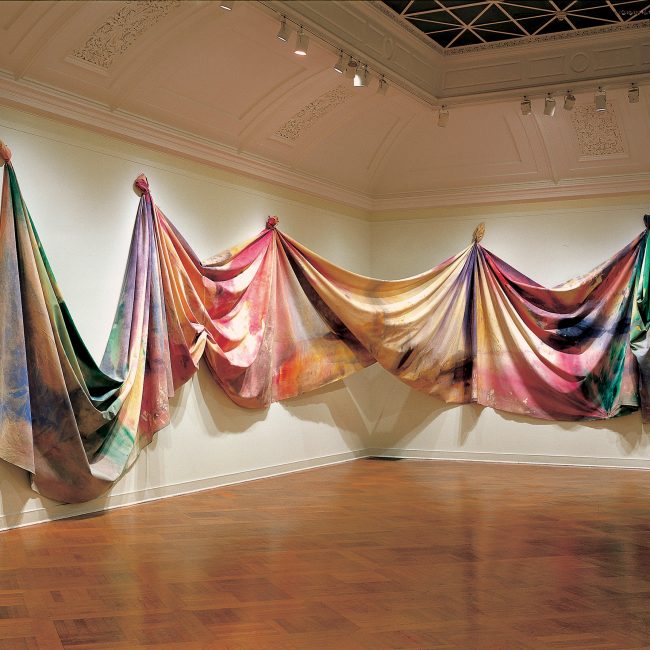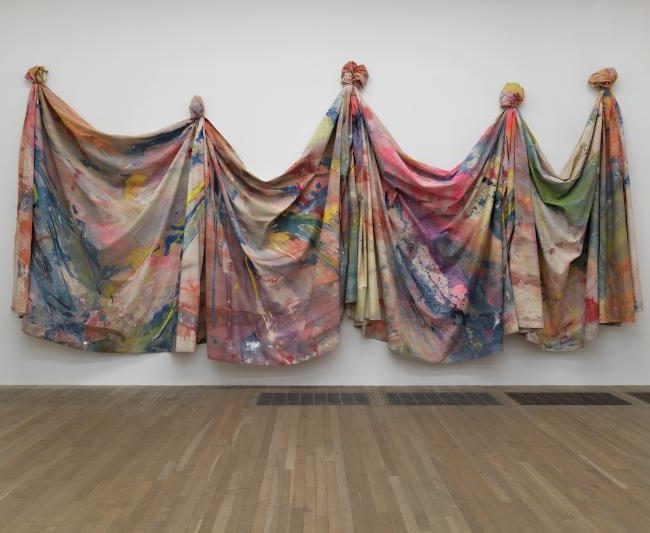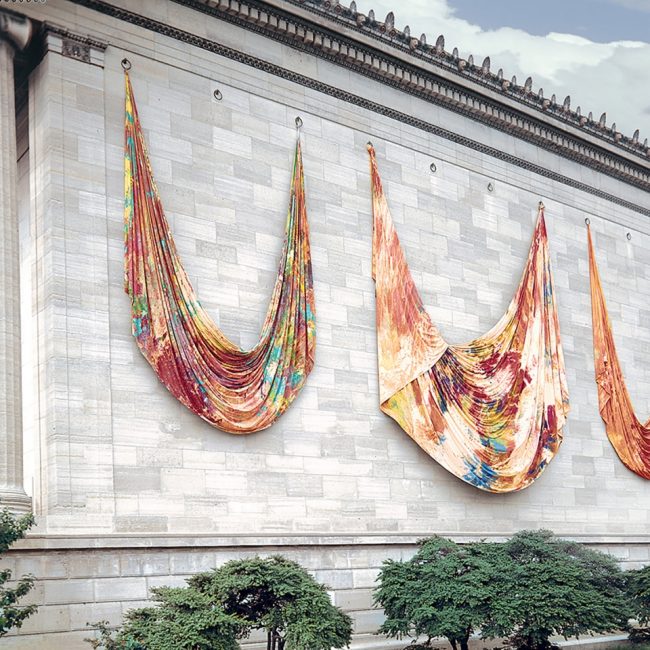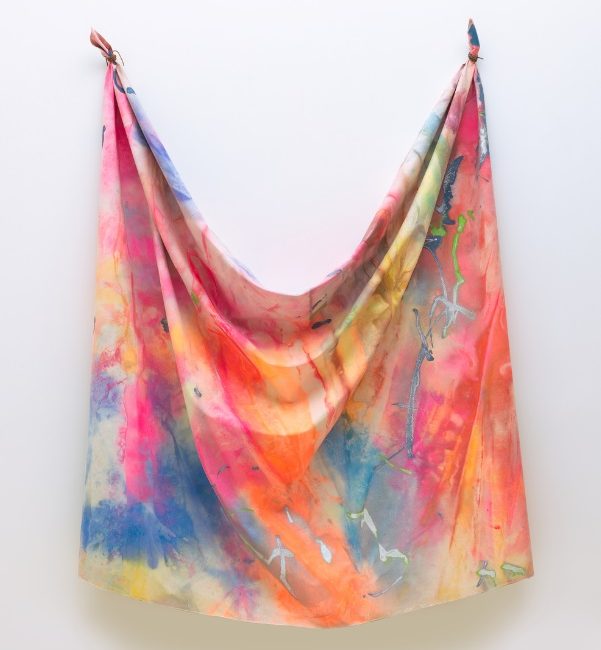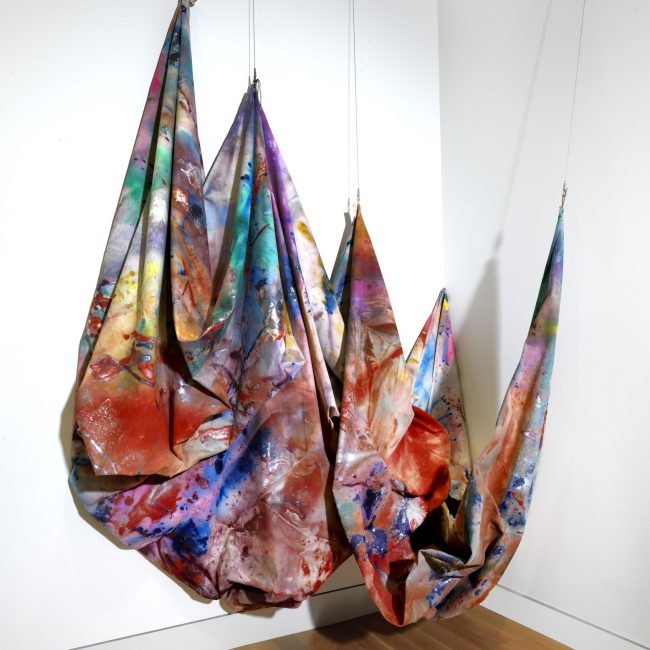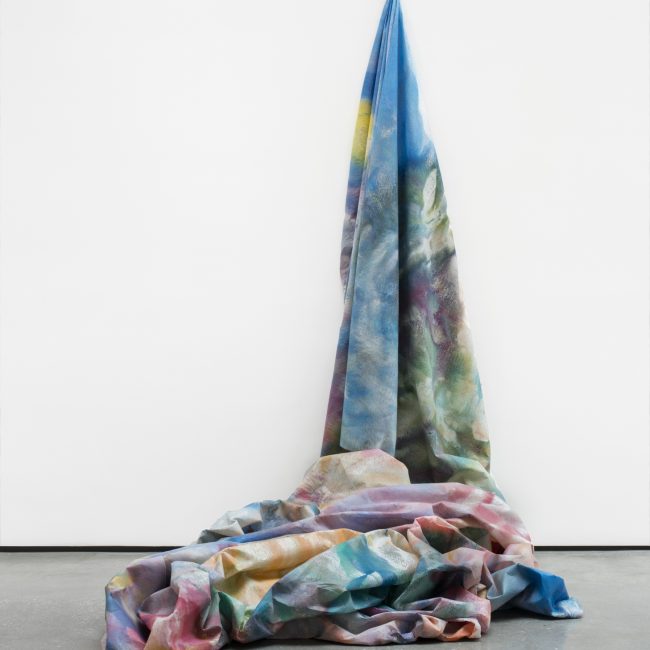
on a string
Imagine entering a museum and seeing, instead of a golden-framed still life painting or a naked woman carved in marble, a dirty fabric hung from the ceiling. You’d immediately ask yourself: is there some kind of renovation going on and the staff didn’t have the time to clean up, or is it one of the exhibits that should be viewed with appreciation.
Anything goes in art. Of course, not everything is to everyone’s liking. A black square on a white background, a urinal turned into a work of art, a banana taped to the wall and sold for a lot of money – these are just some of the examples that may make us tilt our head to the side and ask – not exactly sure if ourselves or the artist – “Really?”. Today you’re likely to ask this very same question again, as we’re about to introduce you to an artist whose output is anything but ordinary.
Sam Gilliam is the man behind the so-called drape painting. The history of art knows different ways of approaching the canvas. Some have placed it on the ground and splashed with paint, others placed painted female bodies on top of it; others cut it open with a knife. Gilliam freed the canvas covered with colorful stains from the wooden loom and let it showcase itself in a free, unlimited form. He would hang canvases on walls or ceilings so that they could fall down on the floor like a heavy curtain creating plastic cascades. With this rather simple yet extremely bold approach, the artist went beyond painting to enter a new discipline that falls somewhere between sculpture and installation.
Gilliam was born in 1933 in Tupelo, Mississippi, the seventh of eight children of a farmer and a seamstress. In the early 1960s he moved to Washington. His career developed during a very difficult period in the United States: the Vietnam War was dragging on for years arousing extreme emotions on both ends of the spectrum, while racism was still very much alive and kicking.
It might seem that such times are not the ideal period for abstract art due to its apparently limited attachment to reality. How could it possibly serve as the vehicle for an artist to express the current state of affairs? And yet racism, even more so than the Vietnam War, could easily affect Gilliam – an African-American citizen.
Gilliam himself said of his art that it is “as political as it is formal”. In one of the interviews he explained: “The expressive act of making a mark and hanging it in space is always political”. How should this be understood? Probably that every artistic act is in a way a statement or a postulate.
It is difficult to imagine art that could fully capture the problem of war or racism. The artist used to this end expressive abstraction which he released from the wooden stretcher, showing that painting can be viewed differently, more broadly. And this applies to every area in life, not just art. In a 2018 interview with Christian Lund at the Artist’s Studio, Sam Gilliam, when asked “How can abstract art be political?”, replied: by messing with the viewer, showing there is something else, an additional layer, hidden underneath what we think, and it makes us question the established order.
Gilliam also emphasized that the fact that we recognize a shape on the canvas does not necessarily mean that we understand a particular artwork. Abstraction makes us open up to something that is different and alien to us, and we begin to see value in it. These words provide an excellent commentary on the turbulent history – not only of the United States, but of whole mankind – because if people were more open to the different and the unknown, neither war nor racism would have ever stained the pages of man’s history.
It is therefore entirely up to you and your openness whether you’ll notice what Sam Gilliam wanted to convey through his drape painting.
Transl. Jakub Majchrzak


